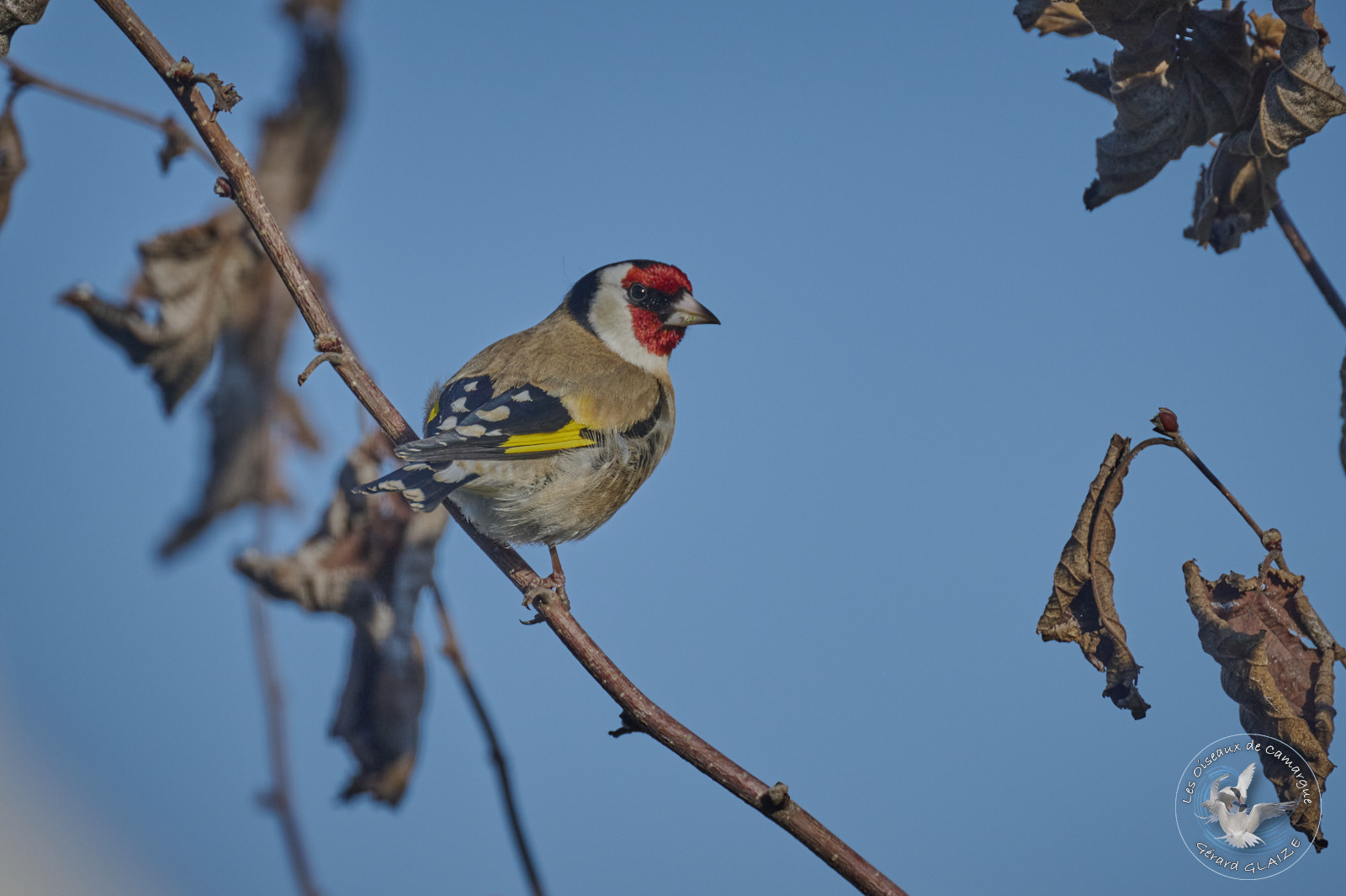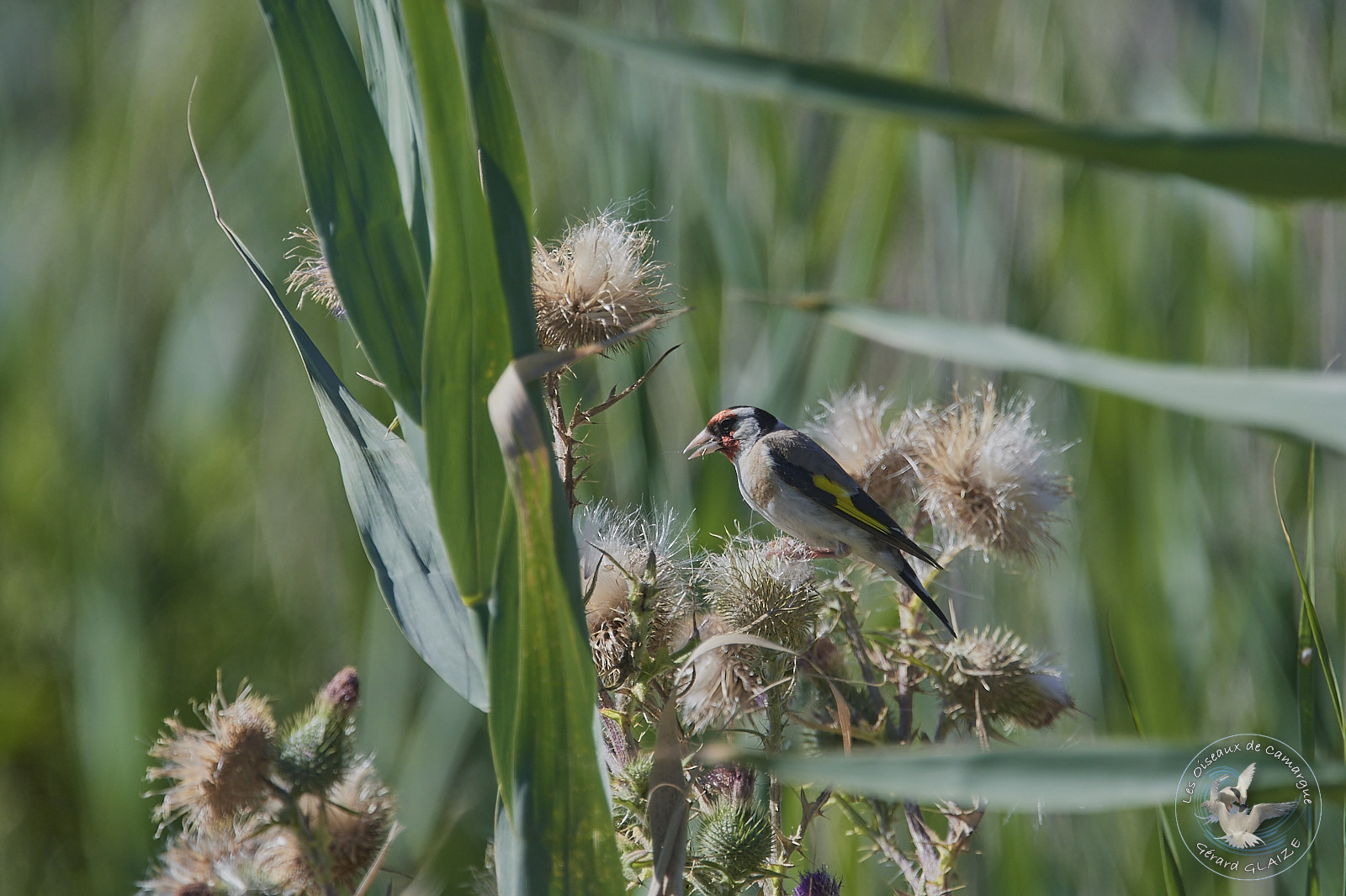European Goldfinch
European Goldfinch is a species of passerine bird of the finch family, partially migratory, small and very motley. Thus, the adult has a scarlet red face surrounded by white and black, a brown back and sides, a black tail with white spots and a white rump. The plumage of its wings is black striped with a wide band of bright yellow. Sexual dimorphism is not marked in this species. The female is however a little less motley than the male, and the red plumage of her face does not pass behind the eyes as in the male.
It is quite graceful, very sociable and its flight is undulating and dancing, but very erratic. It is quite shy especially in the nesting season. The Goldfinch lives in mainly throughout Europe, all countries bordering the Mediterranean, the Middle East except Yemen, and in part of Asia.
European Goldfinch
Scientific name : Carduelis carduelis
Family : Fringillidae
Length: 14 cm – Wingspan: from 25 cm to 30 cm
Weight : from 14 gr to 18 gr
IUCN Conservation Status: LC
Flight
European Goldfinch has a rapid, undulating flight, like most finches. The waves are very deep. The flight is typically punctuated by small calls of cohesion.
Habitat
The European Goldfinch is a fairly common bird of open woodlands, whether deciduous or mixed.
Regime – Diet
The goldfinch is exclusively seed-eating. This one seeks above all the seeds of thistles and burdocks because thanks to its slender beak. He can very well remove them without pricking himself and manages to peel them very skilfully. It also feeds on birch and alder seeds. The wilting or drying cosmos flower also provides him with nourishment that he enjoys.
In winter, it happily frequents feeding stations, provided it finds seeds there.
Nesting
In the spring, nesting begins and the goldfinch is very discreet. The nest built by the female is camouflaged clothing. She lines the outer walls of the nest with twigs, herbs and spider silk. The interior of the nest is also lined with plant down: feathers, lichens. The goldfinch nests in trees, often at the end of a branch, but also in hedges, plum trees, apple trees, cypresses or cherry trees. If she is in a garden or in a park, the female will rather choose maples or poplars. Once the nest is finished, the female lays four to six whitish eggs tending towards blue with brown spots. She broods them alone for 12 to 14 days, while the male supplies her at the nest during this time.
At hatching, the chicks are like most other chicks covered with a light, very long and very thick, very warm down. Parents feed their young with aphids and then with predigested seeds. After two weeks, when the young can fly, they leave the nest. However, the parents still feed them for some time. Then the young form many small flocks that roam in winter. The European Goldfinch produces two to three broods per year.
Migration
The Goldfinch is sedentary but also partially migratory in France. Only northern individuals are considered migratory.
Population
European goldfinch populations are classified as endangered. Indeed, their number has fallen sharply during the last century for two reasons:
- With the excessive use of pesticides for weeds, the goldfinch finds its food less and less easily, consisting almost exclusively of seeds.
- Many captures during the 20th century, to become an ornamental bird.
Protection
The European Goldfinch benefits from total protection on French territory, since the ministerial decree of April 17, 1981 relating to birds protected throughout the territory. It is therefore prohibited to destroy, mutilate, capture or remove it, to intentionally disturb or naturalize it, as well as to destroy or remove eggs and nests, to destroy, alter or degrade its environment.
Song
Its song is a fluid and repeated chirping whose “sticlitt” and “didelitt” intertwine. His aggressiveness translates into a guttural “crrrr”. The goldfinch has a rich and melodious repertoire that can be appreciated especially during the mating period with its “nuptial song”.
We can clearly distinguish the songs of other birds in this repertoire (larky lark, great tit, etc.). These cries are taken up by the goldfinch and often correspond to those of birds around him that he heard when young.
Useful Links
Other Links
- You can see the article from my site “Birds of Camargue” for more information on the Camargue and the Birds.

















